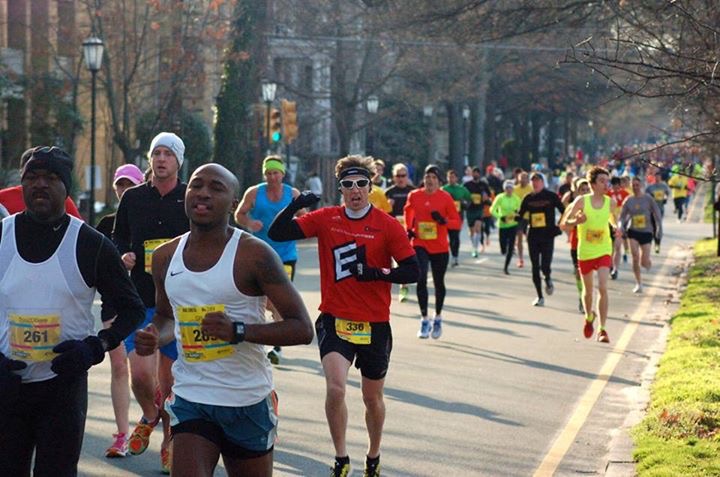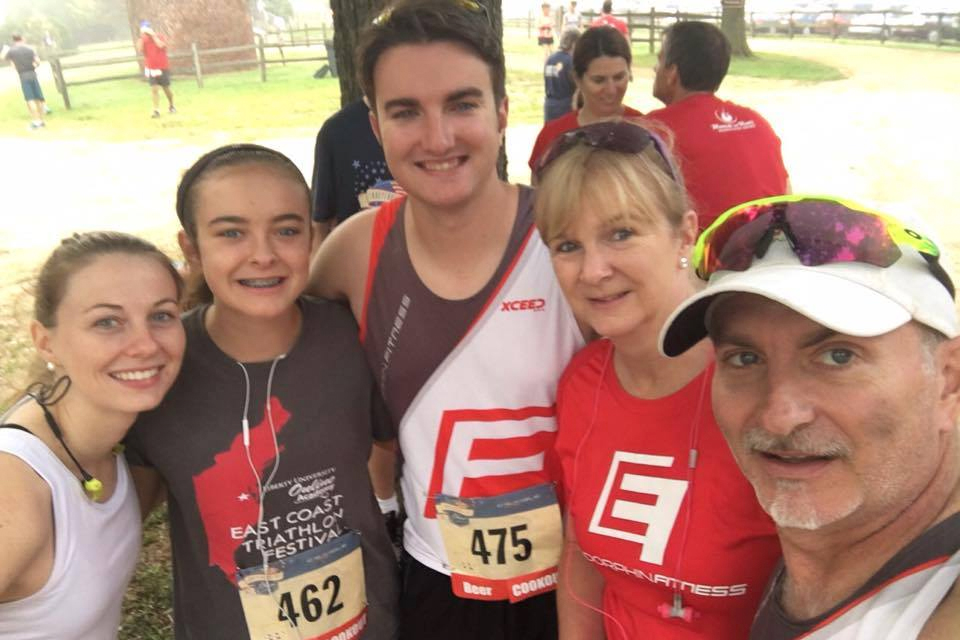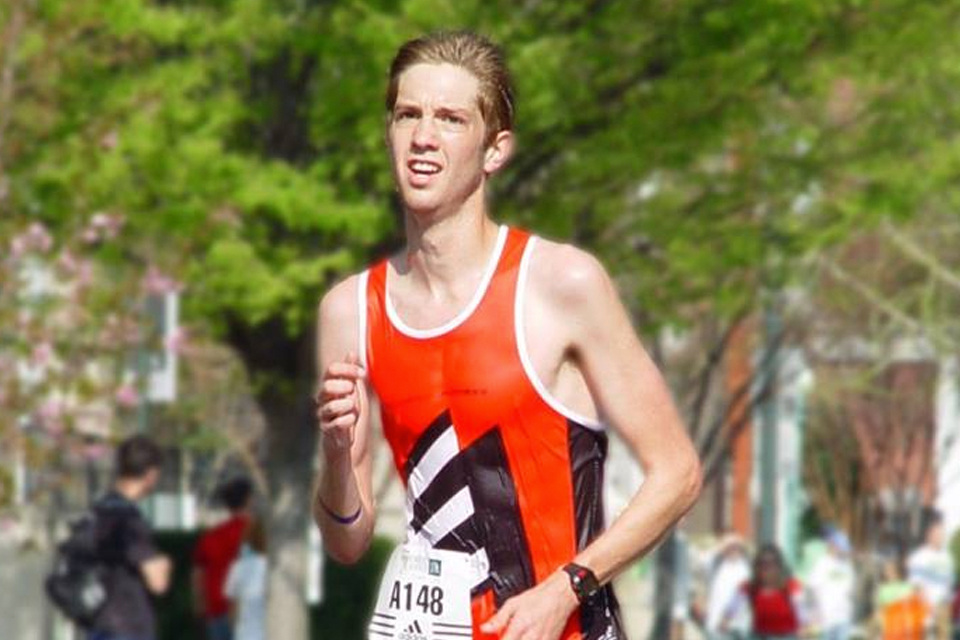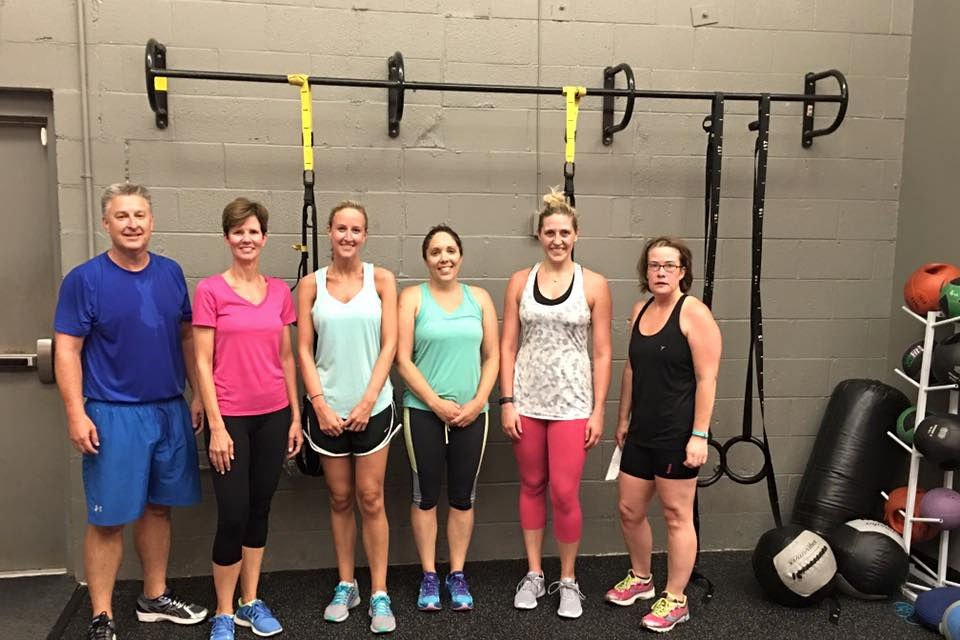The Shamrock Half Marathon and 8k are always a great test for your winter training building on the Frostbite 15k. As a team, we will be supporting the Cameron K Gallagher Foundation this year racing in the memory of Cameron. Cameron passed away shortly after crossing the finish line at this race 3 years ago but since has reached hundreds of thousands of people for the cause of childhood depression through her foundation. Think of her on race day.
Here are a few things to think about heading into this race…
Be Strong – The Half Marathon distance, if run correctly, always demands 3 miles of really toughing it out at the end. After running 10 miles close to threshold pace, your body should want to slow down those last 3. The 8k distance requires you to be at an uncomfortable pace from start to finish. The key is knowing this is what it will take, welcoming the pain, and pushing through it. A tough last 3 miles of the half marathon and 2 miles of the 8k is a sign that you have run this race perfectly as long as you are able to maintain pace for those last miles.
Weather (READ THIS!!) – It is going to be windy. On Saturday, they are calling for 11 mph winds from the SSW and Sunday 19 mph winds from the NNW. For the 8k. this means you will have a head wind for the first 2 miles, tailwind for next 2.25 miles, and then a strong headwind on the boardwalk to the finish line. For the half marathon, this means you will have a side headwind for the first 3 miles, direct headwind for the next 3 miles, and then a tail wind for most of the last half of the race. A tailwind will help your pace by around 6 seconds while a headwind will slow your pace by around 12 seconds. This is extremely important to recognize as I have paid for the mistake heavily before as well as seen athletes pay for it. You must adjust your goal pace for various sections based on head or tail wind. When in a headwind, it is essential that you draft whenever possible by running directly behind (or beside if cross wind) whenever you have a head wind. Do not run by yourself in no man’s land if you can avoid it. Also, I encourage you to wear layers at the start of clothing you don’t mind tossing along the way as you warm up.
Warm Up – For a half marathon, you can get by with some easy dynamic stretching exercises if your distance is not up to the full race distance yet. You do not want to hold any stretches for longer than 3 seconds and think more about movements rather than stretching. If you feel good about the distance, you should jog for 5-10 minutes easy as well. For the 8k, do a more extensive warm up assuming you are comfortable with the distance. I suggest 10 minutes easy followed by 3 x 1 min at race pace w/ 1 min easy b/w and then keep moving (jumps, etc) at the start.
Race Pace – For the half marathon, physiologically you can hold zone 4 for 1 hour and zone 3 for 2-3 hours, so half marathon pace is somewhere in between the two depending on how long your race should take. For instance, if you plan to finish in 1:20, then you can run about 5-10 seconds off zone 4 pace. If running 1:40, you will be about 15-20 seconds off threshold pace. If 2 hours, 25-30 seconds off threshold pace. For the 8k, you should be about 5-10 seconds / mile faster than 10k pace. Hold back slightly for the first 2 miles, build during the next 2 miles and then lay it on the line in that final .96!
Race pace should stretch you – I hope you look at your goal pace and think “wow, that is faster than I thought, but I think there is a chance I can do it.” If you are saying that, the pace is perfect. To achieve that pace, you are going to have to commit mentally and physically, but I am confident all of you can do it. I like to think of running races as racing using your mind for the first 2/3 of the race and your heart for the last 1/3. Do not go out too fast – trust that the pace is right for you and be smart. If you feel great with 1/3 of the race left, you can start taking some risks and racing with your heart.
Nutrition – Nutrition begins now! Through the race, get in plenty of fluids and sodium (salt your food more). Look for a little more carbohydrates than normal and taper off the fiber. Eat your last big meal Friday night and small meals throughout the day on Saturday largely of carbohydrates. Wake up as early as possible on race day and eat a good breakfast of carbohydrates and begin drinking water. Last 60 minutes sip a bottle of sports drink finishing up 15 minutes from start. Use the bathroom one last time. If you want, this is a good time to take a gel with some water as well. For the 8k, you are probably fine not taking in nutrition on the course but drink to desire. During the half marathon, you will need to consume fluids, gels, and possibly sodium to keep glycogen stores well maintained and not bonk. Plan to sip SPORTS DRINK at most of the aid stations and consume 1 gel (or equivalent) every hour. Be aware of sloshing in your stomach…if you feel it, back off the nutrition slightly and let it digest. If you cramp at any time during the race, look for sodium.
The Half Marathon Race Course
This course is flat and fast. The biggest thing to contend with is the wind which you should minimize through drafting. Here is the breakdown of the course:
0-3 Miles: Flat and should be a head wind. Do not get excited and blow your race here – should probably run 12-15 seconds off goal pace. Be smart.
3-6.5 Miles: This section is on Shore Drive and finishes with a little in Fort Story. The entire section is slightly uphill though you will feel it less on Shore Drive. Once you turn into Fort Story, it will feel more uphill because you will usually encounter wind for the first time here as well. When I say uphill, I am talking slight though. Continue to run smart running 12-15 seconds off goal pace but not getting excited and running faster than goal. You need to run the first 6.5 miles the smartest.
6.5-10 Miles: This section is slightly downhill finishing the Fort Story section and making a left onto Atlantic Avenue. Even though it is slightly downhill, it is usually one of the tougher sections as there is usually wind (though not always). If the wind is truly at your back, you should be able to make up for some lost time from the first 6 miles during this stretch but don’t get overly ambitious yet.
10-12.5 Miles: This is the remaining section of Atlantic Avenue. The best part about this section is all of the crowd support. You should also have the wind at your back but slightly from the side. This is where the race really begins. Now is the time to ignore your goals, ignore your HR, and start lifting the pace slightly at first and with everything you have by the end. Be tough and seek to nearly empty the tank by the end.
12.5-13.1 Miles: Left turn and then right turn onto the boardwalk. If windy, this will be tough as it always is anyway as the finish line seems so close yet so far away. Try to run behind someone drafting them and empty the tank which requires them to want to empty the tank as well. Go for it here…all the pain will be over in a short couple of minutes – GO!!!
You are all going to do great!! Believe in yourself and make it a reality!
The 8k Race Course
The 8k course is flat as a pancake. Pretty simple out and back and then finishes on the boardwalk.
0-2 Miles: Flat but you will have the wind in your face. Luckily, you will have the crowd with you so you should tuck in behind the other runners. With drafting, I would run 5-8 seconds slower than goal pace through this section to be safe.
2-4.25 Miles: Should be flat and fast with the wind at your back. You should seek to run this slightly ahead of goal pace (3-6 seconds faster about).
4.25-4.96 Miles: Course turns onto the boardwalk for the final half mile. Again, you should have the wind in your face which will require you to really be tough and finish strong. The good side is that those who are not as tough as you will suffer here leaving the door open for you to pass many in the final stretch (see last Friday’s blog post






